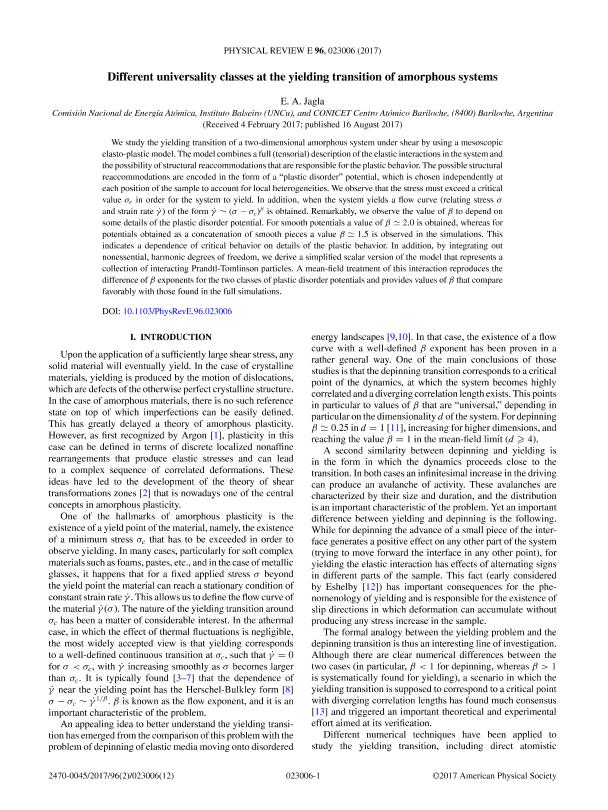Artículo
Different universality classes at the yielding transition of amorphous systems
Fecha de publicación:
08/2017
Editorial:
American Physical Society
Revista:
Physical Review E
ISSN:
2470-0053
Idioma:
Inglés
Tipo de recurso:
Artículo publicado
Clasificación temática:
Resumen
We study the yielding transition of a two-dimensional amorphous system under shear by using a mesoscopic elasto-plastic model. The model combines a full (tensorial) description of the elastic interactions in the system and the possibility of structural reaccommodations that are responsible for the plastic behavior. The possible structural reaccommodations are encoded in the form of a "plastic disorder" potential, which is chosen independently at each position of the sample to account for local heterogeneities. We observe that the stress must exceed a critical value σc in order for the system to yield. In addition, when the system yields a flow curve (relating stress σ and strain rate γ) of the form γ ∼(σ-σc)β is obtained. Remarkably, we observe the value of β to depend on some details of the plastic disorder potential. For smooth potentials a value of β≃2.0 is obtained, whereas for potentials obtained as a concatenation of smooth pieces a value β≃1.5 is observed in the simulations. This indicates a dependence of critical behavior on details of the plastic behavior. In addition, by integrating out nonessential, harmonic degrees of freedom, we derive a simplified scalar version of the model that represents a collection of interacting Prandtl-Tomlinson particles. A mean-field treatment of this interaction reproduces the difference of β exponents for the two classes of plastic disorder potentials and provides values of β that compare favorably with those found in the full simulations.
Palabras clave:
Plastic Yielding
Archivos asociados
Licencia
Identificadores
Colecciones
Articulos(CCT - PATAGONIA NORTE)
Articulos de CTRO.CIENTIFICO TECNOL.CONICET - PATAGONIA NORTE
Articulos de CTRO.CIENTIFICO TECNOL.CONICET - PATAGONIA NORTE
Citación
Jagla, Eduardo Alberto; Different universality classes at the yielding transition of amorphous systems; American Physical Society; Physical Review E; 96; 2; 8-2017
Compartir
Altmétricas




